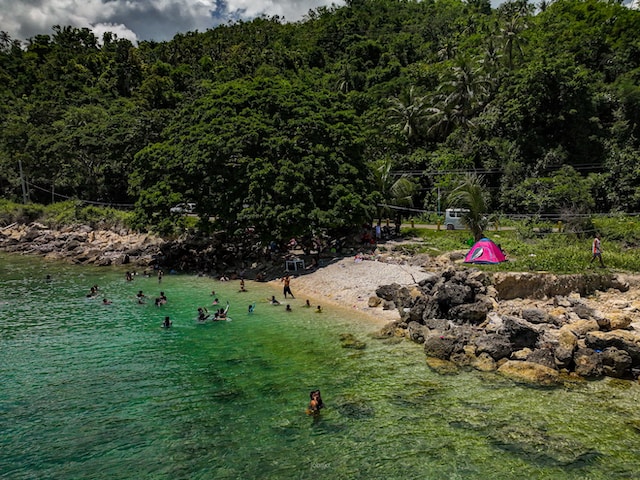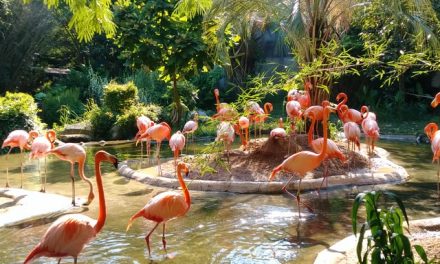Considering a trip to Cebu? Timing is everything. To truly immerse yourself in Cebu’s captivating culture, awe-inspiring landscapes, and vibrant festivities, you need to pick the prime season. Transition from being a curious traveler to a well-informed globetrotter by exploring our detailed insights. Ready to unlock the best time to visit Cebu? Dive in and let your ultimate Cebu adventure unfold.
Best time to visit Cebu: Know the Timing for Your Perfect Island Escape
Embarking on a journey to Cebu? Before you pack those bags and set out on your Filipino adventure, it’s imperative to know the optimal season to witness the island in all its glory. Navigate through Cebu’s pristine beaches, bustling markets, and historic landmarks seamlessly by choosing the right month. Dive into our comprehensive guide, uncover hidden gems, and plan your trip to perfection. Don’t wait; the tropical allure of Cebu beckons!
The best months to visit Cebu are:
Yet, as any seasoned traveler would advise, timing is paramount to optimizing the experience. As we navigate through the calendar, let’s uncover the best months to set sail to this island paradise.
Golden Months – Late December to May: Best time to visit Cebu
Starting off with late December, the Philippine archipelago, and Cebu in particular, begins to say its farewells to the rainy season, welcoming travelers with pleasant, sun-drenched days. As the year transitions into January, beyond the beckoning beaches, Cebu is alive with the rhythms and hues of the Sinulog Festival. February to May, meanwhile, mark the heart of the dry season.
This stretch, often termed the ‘tourist season’, is undeniably the best time to visit Cebu for those seeking sunlit adventures without the interruption of rain. Moreover, the reduced rainfall during these months ensures your outdoor plans remain mostly uninterrupted.
By the time May rolls around, you’ll be bathed in a warm tropical glow, with longer days giving you ample time to soak up all of Cebu’s wonders.
Diving Deeper: An Aquatic Affair

For diving enthusiasts and underwater explorers, April and May present optimal conditions. With crystal-clear waters and thriving marine biodiversity, sites like Moalboal and Malapascua Island become sanctuaries for divers. Not to mention, this is also a favorable time for those eager to swim alongside the gentle giants of Oslob.
Moreover, Oslob, a small town in Cebu, is renowned for its whale sharks. The best time to visit Cebu for whale sharks is early in the morning from November to June.
The Monsoon Muse – June to Early December: Best time to visit Cebu
Then, as the calendar page flips to June, the rain begins to mark its presence. While the best time of year to visit Cebu might be the dry season, the wet season, stretching from June to early December, has its charm. The landscapes are greener, and there’s a certain tranquility in the air. Transitioning through these months, the island undergoes a verdant transformation. The rain breathes life into the landscape, making the terrain greener and the waterfalls more majestic.
Moreover, the intermittent drizzles often give way to serene moments, perfect for introspective beach walks or cozying up with a book in a hillside cafe. Engage in river treks, waterfall explorations, or simply relish the cooler temperatures while roaming Cebu’s historic streets. However, travelers should be prepared for sporadic rain, making it essential to pack a raincoat or umbrella.
Festive Finale: December Beckons Once More
As the year prepares for its curtain call, December, especially its latter half, offers a delightful window for travelers. The weather begins to cool, and the Christmas festivities imbue the island with an infectious joy. Strolling through streets adorned with parols (star-shaped lanterns) and savoring traditional delicacies can make your Cebu visit truly memorable.
The Best Festivals to Visit Cebu:

For travelers seeking to immerse themselves in local culture and traditions, timing your visit to coincide with one of Cebu’s lively festivals is a brilliant idea. Let’s dive into the festival-filled timeline of Cebu to help you plan your visit.
Kicking Off with a Bang: Sinulog Festival in January
First up, and arguably the most renowned, is the Sinulog Festival. As January rolls in, the city of Cebu bursts into a riot of colors, dances, and chants, all in honor of Santo Niño, or the child Jesus. Moving through the heart of the city, you’ll encounter a mesmerizing parade of dancers, their rhythmic movements mirroring the river’s flow, which is what ‘Sinulog’ denotes. Moreover, the air resonates with chants of “Viva Pit Señor!” honoring the Santo Niño.
As the parade progresses, you’ll witness floats adorned with intricate designs, adding yet another layer to this cultural tapestry. By the time the grand procession culminates, you’ll have journeyed through a vivid spectrum of Cebuano heritage, making Sinulog not just a festival but a transformative experience.
Tip: Given the popularity of Sinulog, it’s wise to book your accommodations well in advance and be prepared for massive crowds.
Transitioning to Summer: Kadaugan sa Mactan in April
As you transition from the cool aftermath of Sinulog, the month of April presents another historical spectacle: the Kadaugan sa Mactan. Kadaugan sa Mactan literally translates to “Victory in Mactan. The festival commemorates the Battle of Mactan, which took place in 1521. Consequently, every April, Mactan Island transforms into a vibrant stage, reenacting this historic confrontation.
Furthermore, it’s not just about the battle; it’s a celebration of Cebuano pride and resilience. As the event unfolds, visitors are treated to a blend of traditional dances, music, and art, capturing the essence of Cebuano heritage.
Embracing the Rain: Tres de Abril in, well, April
Tres de Abril, translating to “Third of April”, holds monumental significance for Cebu. Commemorating the historic 1898 uprising against Spanish colonial rule, this day marks a turning point for Cebuanos. Initially, as tensions escalated, local revolutionaries, fueled by a passion for freedom, mounted a fierce resistance. On this very day, they achieved a remarkable victory in what’s now known as the Battle of Tres de Abril.
Today, Cebu honors its brave ancestors with reenactments, ceremonies, and city-wide events. For visitors, it offers a profound insight into Cebu’s resilient spirit and its journey to sovereignty. In essence, Tres de Abril isn’t just a date; it’s a testament to Cebu’s indomitable will and its rich tapestry of history.
Prepping for the Conclusion: Pasko sa Sugbo in December
Wrapping up the year, December brings with it ‘Pasko sa Sugbo, or Christmas in Cebu. While Christmas is celebrated with zest globally, Cebu adds its unique touch with month-long festivities. Pasko sa Sugbo, translated as “Christmas in Cebu,” is a radiant celebration that transforms Cebu into a wonderland each December.
Initiating the festivities, the city’s Fuente Osmea Circle gets adorned with twinkling lights and ornate decor. As you delve deeper, nightly cultural shows and concerts grace the city, showcasing Cebu’s rich heritage. Moreover, the local churches reverberate with the soulful notes of Simbang Gabi, the iconic dawn masses.
Amidst this, local markets bustle, offering traditional delicacies like ‘bibingka’ and ‘puto bumbong’. In essence, Pasko sa Sugbo isn’t merely a festival; it’s an emotion, binding the Cebuanos in warmth, faith, and jubilation.
Holy Week: March or April
In Cebu, Holy Week unfolds as a profound reflection of faith and tradition. Commencing with Palm Sunday, the streets resonate with the rustle of palm fronds, symbolizing Jesus’ arrival in Jerusalem. As the week progresses, the solemnity deepens, culminating in the deeply reverent observances of Maundy Thursday and Good Friday.
Locals participate in processions, recounting the Stations of the Cross and Jesus’ journey to Calvary. Visita Iglesia, a cherished practice, sees devotees visit seven churches, pray, and reflect. By Black Saturday, anticipation builds, crescendoing into the jubilant celebrations of Easter Sunday, marking Jesus’ resurrection. Altogether, Holy Week in Cebu is a poignant tapestry of devotion, community, and spiritual renewal.
Pahina Festival: May
Located in the heart of Carcar, south of Cebu City, the Pahina Festival is a vibrant celebration that pays homage to the town’s rich history and artisanal legacy. Celebrated annually in May, this festival derives its name from “pahina,” meaning “page,” symbolizing Carcar’s significant chapter in Cebu’s overarching narrative. As you delve deeper, you’ll discover that it’s not just about colorful parades; it’s a grand showcase of the town’s renowned crafts, including shoemaking and chandelier crafting.
Furthermore, gastronomes rejoice, for the Pahina Festival is also a culinary treat, highlighting the area’s local delicacies like the delectable lechon and sweet chicharon. In essence, this festival offers a unique blend of cultural heritage and delightful experiences, making it a must-visit for those keen on immersing themselves in Cebu’s rich tapestry.
Christmas: December
Nestled in the heart of the Philippines, Cebu transforms into a wonderland during Christmas. Firstly, the season commences with the captivating Misa de Gallo, a series of dawn masses spanning nine days before Christmas. Simultaneously, vibrant lanterns and parols light up homes, symbolizing the Star of Bethlehem. Furthermore, carolers fill the air with melodious renditions of classic Yuletide songs, spreading cheer in every corner.
Remarkably, Cebuanos blend traditional Filipino customs with religious reverence, ensuring a unique festive experience. On Christmas Eve, families gather for Noche Buena, a grand feast to celebrate togetherness. In conclusion, Christmas in Cebu is a radiant fusion of faith, festivity, and familial bonds, making it a must-experience for any traveler.
Thrill-Seeker’s Guide: Navigating Adventure Activities in Cebu
For those with a heart craving adventure and eyes eager to witness nature’s majesty, Cebu stands as an enticing chapter in the chronicles of exploration. Let’s dive deeper into the ideal moments to indulge in Cebu’s adventurous offerings.
Underwater Expeditions: Diving and Snorkeling
Best Months: March to June
During these sun-soaked months, Cebu’s marine life takes on its most vivid attire. With the waters being astonishingly transparent, dive spots like Moalboal and Malapascua emerge as underwater utopias. Beyond the popular thresher sharks and the dramatic sardine run, divers can also discover pygmy seahorses, nudibranchs, and other macro delights.
For snorkelers, the shallower coral gardens burst into a riot of colors, teeming with a variety of tropical fish. And, of course, there’s the gentle allure of swimming alongside the awe-inspiring whale sharks in Oslob.
Wild Waters: Canyoneering at Kawasan Falls

Best Months: February to May
As you traverse through the verdant canyons of Kawasan, every step is an adventure. The clear, azure waters against the backdrop of thick tropical vegetation make for an enchanting view. But the thrill comes from jumping off those cliffs, sliding down natural stone slides, and navigating the river’s challenging turns. Given the outdoor nature of this activity, the dry season ensures safety, reduced river turbulence, and an unmarred experience.
Peaks and Valleys: Mountain Trekking and Climbing
Best Months: January to May
Cebu’s topography is generously sprinkled with challenges for mountain enthusiasts. Trails vary from beginner-friendly hikes to more demanding ones. Osmena Peak is a favorite, but there are other lesser-known trails, like the Dalaguete Trail, that offer solitude and untouched beauty. The cooler months, devoid of torrential rains, provide the best conditions, ensuring paths are less muddy and the vistas at the peak remain unobscured by fog or rain.
Soaring High: Paragliding Over Coastal Vistas
Best Months: January to April
The pure thrill of taking off from a cliff, floating above Cebu’s picturesque coastlines, and flying is unmatched. Soaring high above Cebu’s picturesque coastlines, paragliding offers an exhilarating vantage point like no other. Harnessing the steady northeastern breezes, adventurers can glide gracefully, witnessing the intricate tapestry of islands, beaches, and turquoise waters below.
For thrill-seekers and serenity-lovers alike, paragliding in Cebu is an unmatched communion with the sky, providing memories that linger long after the descent. With the steady northeastern winds of the Amihan season, paragliders can enjoy longer flights, witnessing the island’s tapestry from an eagle’s perspective.
Traversing Tranquil Waters: Kayaking and Paddleboarding

Best Months: December to May
While adrenaline rushes are a common theme in adventure, there’s a unique thrill in the tranquil activities of kayaking and paddleboarding. Glide through serene rivers, explore hidden mangrove channels, or paddle out to the open sea to witness the sunrise. In the serene embrace of Cebu’s waters, kayaking and paddleboarding offer unparalleled tranquility. The island’s vast coastline and calm river channels beckon adventurers for a gentle sojourn.
With every paddle stroke, you’re not just moving through water but also through Cebu’s scenic tapestry. From mangrove-laden estuaries to the vast azure sea, these activities unveil Cebu’s beauty from a unique vantage point. For those seeking a blend of peace and adventure, these water escapades are truly unmatched. The calmer weather of these months ensures safer and more picturesque paddling adventures.
Conclusion:
In summation, Cebu’s allure is undeniably year-round, yet each season casts its own unique spell. From sun-drenched beaches to rain-kissed landscapes, timing truly elevates one’s experience. As the months unfold, they reveal varying facets of this island gem. So, whether you’re an adventurer, a culture enthusiast, or a relaxation seeker, aligning your visit with Cebu’s rhythms promises an unforgettable journey.
Thank you for reading. For more travel updates, visit the Journey Index.




